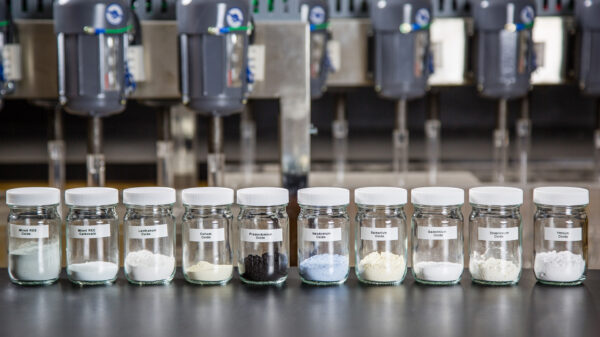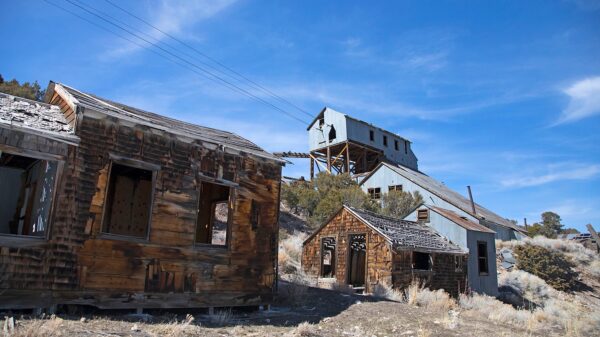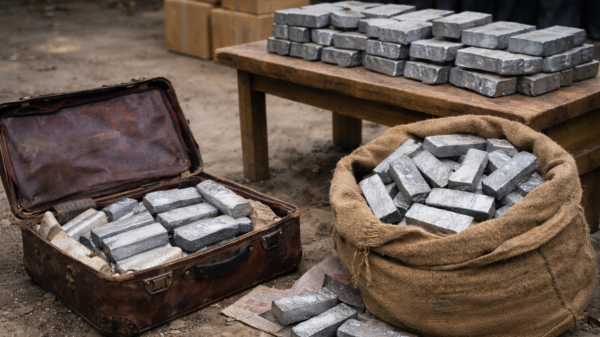Locksley Resources (OTCMKTS: LKYRF) (ASX: LKY) surged 55 per cent in mid-morning trading after announcing a major step forward at its Mojave Critical Minerals Project in California.
The company has submitted an expanded Plan of Operations to the U.S. Bureau of Land Management (BLM), targeting its Desert Antimony Prospect. This submission marks a key milestone as Locksley intensifies exploration just three kilometers from MP Materials’ Mountain Pass Mine—the only operating rare earths mine in the country.
Backed by an oversubscribed capital raise, Locksley is fully funded for its upcoming drill campaign. The company recently completed structural mapping and 3D modeling, which significantly expanded its target zone. BLM approval is expected this fall, with drilling likely to begin soon after.
The Mojave Project spans over 250 claims across two primary zones: the North Block/Northeast Block and the El Campo Prospect. The North Block directly borders MP Materials Corp. (NYSE: MP) claims. Meanwhile, El Campo lies on the same mineral trend as the Mountain Pass Mine, enhancing its geological potential.
A standout feature of the project is the historic Desert Antimony Mine, last active in 1937. However, surface sampling has returned grades as high as 46 per cent antimony and 1,022 g/t silver. These results indicate the prospect may hold one of the richest antimony deposits in the U.S.
Antimony remains a critical metal with applications in defense systems, semiconductors, and advanced alloys. The U.S. currently has little domestic production. Accordingly, Locksley’s progress could position it as a vital player in reshoring the American critical minerals supply chain.
The metal has been in high demand lately due to effects occurring in the wider market, and globally.
Read more: NevGold’s long intervals of antimony & gold mineralization turn heads
Read more: Promising antimony find in Nevada strongly positions NevGold Corp in minerals race
FAST-41 program streamlines antimony permitting process
The demand for antimony is rising sharply as the U.S. and its allies scramble to secure supplies of critical minerals essential for defense, semiconductors, and energy technologies. Antimony strengthens metal alloys, improves battery performance, and is vital in flame retardants. However, China and Russia currently dominate global supply, making U.S. access increasingly urgent.
To address this vulnerability, the U.S. government has taken action. The FAST-41 (Fixing America’s Surface Transportation Act – Title 41) program streamlines the permitting process for critical mineral projects. One of the most high-profile beneficiaries is Perpetua Resources Corp (TSE: PPTA) (NASDAQ: PPTA), whose Stibnite Gold Project in Idaho hosts the largest known antimony resource in the United States. The project, now part of FAST-41, is expected to provide both gold and antimony—making it a rare and strategic dual-metal play.
Meanwhile, other mining companies are shifting gears. Several junior gold miners now aim to diversify into antimony production. This pivot reflects both market demand and a growing appetite for government procurement contracts. Companies see antimony as a path to securing funding, partnerships, and long-term relevance.
NevGold Corp‘s (CVE: NAU) (OTCMKTS: NAUFF) (FRA: 5E50) is among those adjusting their strategy. Known for its gold exploration in Nevada and British Columbia, NevGold is now assessing critical metals, including antimony, across its land package. The company has not abandoned gold, but it recognizes the strategic and financial advantages of aligning with national priorities.
Furthermore, government backing for critical mineral projects continues to grow. This support includes tax incentives, permitting advantages, and potential offtake agreements. As antimony’s role in national security expands, more resource companies may follow suit, repositioning themselves for both geopolitical relevance and future growth.
.
NevGold Corp is a sponsor of Mugglehead news coverage
.











